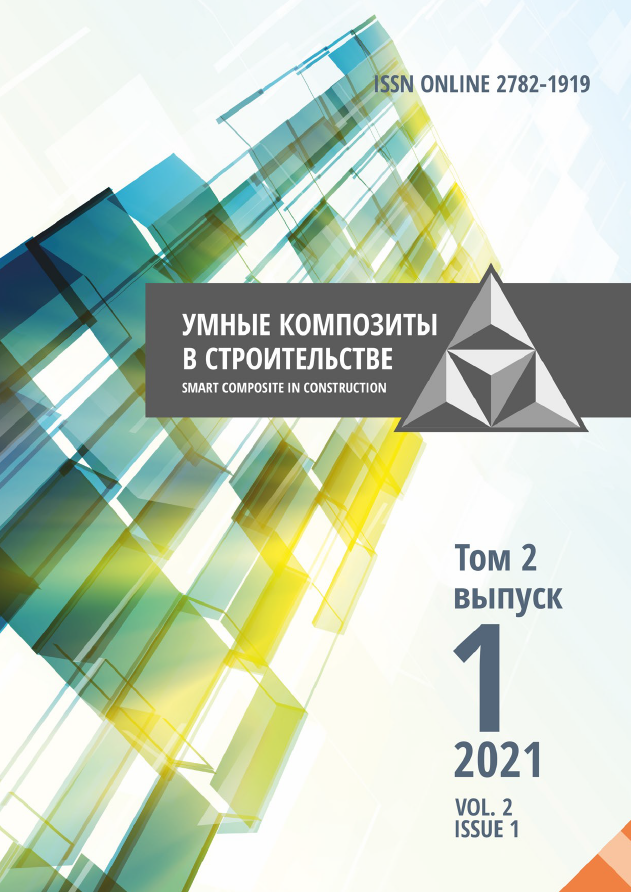Москва, г. Москва и Московская область, Россия
Иваново, Ивановская область, Россия
Ростов-на-Дону, Ростовская область, Россия
Иваново, Ивановская область, Россия
Иваново, Ивановская область, Россия
УДК 004.6 Данные
В статье обоснована актуальность проблемы повышения эффективности организации строительного производства путем моделирования организационно-технологи-ческой надежности строительства на современном этапе. Представлен обзор отечественного и зарубежного опыта решения указанной проблемы. Сформулированы основные выводы по современному состоянию теоретической проработанности темы и ее практической реализации. Определены основные направления дальнейших научных исследований. Основанием подхода авторов является положение, что моделирование организационно-технологической надежности строительного производства как сложной системы необходимо начинать с моделирования её подсистем: строительно-монтажных работ, так как надёжность системы зависит от надёжности её компонентов. Данная статья направлена на системное представление методов моделирования строительно-монтажных работ с целью повышения организационно-технологической надёжности строительного производства. Цель статьи – комплексное представление методов моделирования организационно-технологической надёжности строительного производства, применяющихся на современном этапе развития строительной науки и науки об организации строительного производства. Статья интересна для читателей, интересующихся использованием экономико-математических моделей и методов в современной системе организации строительного производства при выборе вариантов строительно-монтажных работ: а именно, руководствоваться моделями, учитывающими различные целевые критерии строительства зданий и сооружений, в том числе разнонаправленные и нечёткие.
строительство, моделирование, организационно-технологическая надёжность, строительное производство, строительно-монтажные работы
1. Lianying Zhang, Xiang Zhang, Teng Ma. Management of Construction Schedules Based on Building Information Modeling Technology. Emerging Technologies for Information Sys-tems, Computing, and Management. Springer, NY. 2013. V.1. P. 81-88.
2. Cormen T.H., Leiserson C.I., Rivest R.L., Stein C. Algorithms: construction and analysis. 2nd edition, Translated from English, Moscow: Williams Publishing house. 2010. 1296 p.
3. Bilec M., Ries R., Scott Matthews H. Life-Cycle Assessment Modeling of Construction Processes for Buildings. Journal of Infrastructure Systems. V. 16. N 3. 2010. P. 199-205.
4. Karhu Vesa, Keitila Matti, Lahdenpera Pertti. Construction process model. Generic present-states systematization by IDEF0. Espoo 1997. Technical Research Centre of Finland, VTT Tiedotteita – Meddelanden – Research Notes 1845. 190 p.
5. Fedosov S.V., Fedoseev V.N., Kotlov V.G., Petrukhin A.B., Oparina L.A., Martynov I.A. Theoretical bases and methods of increasing energy-efficient residential and public buildings and buildings of textile and light industry. Ivanovo: Pressto. 2018. 320 p. (in Russian).
6. Aloyan R.M., Fedosov S.V., Oparina L.A. Energy-Efficient buildings-state, problems and solutions. Ivanovo: Pressto. 2016. 240 p. (in Russian).
7. Mohamed Moussa, Janaka Y. Ruwanpura, George Jergeas, Tamer Mohamed. Hybrid Simulation Environment for Construction Projects: Identification of System Design Criteria. Journal of Construction Engineering. Vol. 2014. Article ID 847430. 12 p.
8. Zdzislaw Hejducki. Scheduling model of construction activity with time couplings. Journal of Civil Engineering and Management. 2003. 9(4). P. 284-291. DOI:https://doi.org/10.1080/13923730.2003.10531341.
9. Biruk S., Jaśkowski P., Czarnigowska A. Updating Linear Schedules with Lowest Cost: a Linear Programming Model. IOP Conf. Series: Materials Science and Engineering. 2017. 072011. 245(7) p. URL: https://www.researchgate.net/publi-cation/320860315_Updating_Linear_Schedules_with_Lowest_Cost_a_Linear_Programming_Model
10. Hojjat Adeli, Asim Karim. Construction scheduling, cost optimization, and management. Taylor & Francis e-Library. 2005. 179 p.
11. Qian Li, Sha Tao, Heap-Yih Chong, Zhijie Sasha Dong. Robust Optimization for Integrated Construction Scheduling and Multiscale Resource Allocation. Hindawi Complexity. 2018. P. 1-17.
12. Biruk S., Jaskowski J. Scheduling Linear Construction Projects with Constraints on Resource Availability. Archives of Civil Engineering. 2017. V. 63. N 1. P. 3-15.
13. Jose Maria Delos Santos. 2018 Technology and Software Trends in the Construction Industry. URL: https://project-management.com/2018-technology-and-software-trends-in-the-construction-industry
14. Mailyan A.L., Nekhay R.G. Models and algorithms of organ-izational and technological reliability in the planning and organization of construction production. Rostov-na-Donu: BARA. 2015. 116 p. (in Russian).
15. Aloyan R.M., Petrukhin A.B., Fedoseev V.N., Oparina L.A., Chistyakova Yu. A. Organizational and technical solutions for reducing the energy intensity of the Russian economy on the example of the textile and construction industries. Izv. Vyssh. Uchebn. zavedenij. Tekhnologiya Tekstil'noj Promyshlennosti. 2017. N 4 (370). P. 301-304. (in Russian).
16. Rumyantsev E.V., Fedoseev V.N., Petrukhin A.B., Oparina L.A., Chistyakova Yu.A. Socio-economic effects of reducing the energy intensity of the Russian economy. Ivanovo: Pressto. 2018. 128 p.
17. Aloyan R.M., Petrukhin A.B., Filimonova N.M., Kapustina N.V. Management of logistic risk factors in the process of production organization. Izv. Vyssh. Uchebn. zavedenij. Tekhnologiya Tekstil'noj Promyshlennosti. 2017. N 4 (370). P. 94-97. (in Russian).








